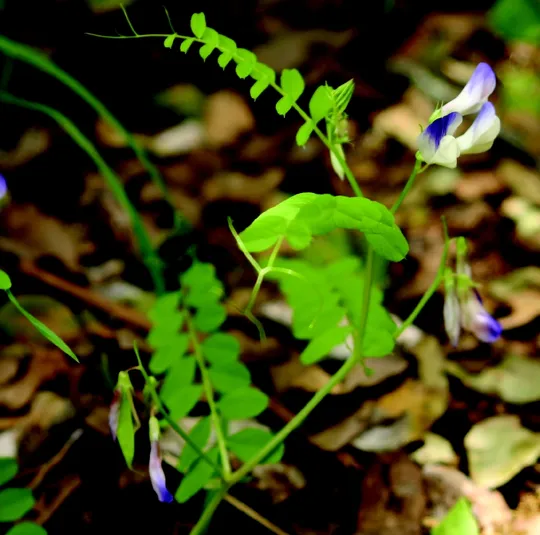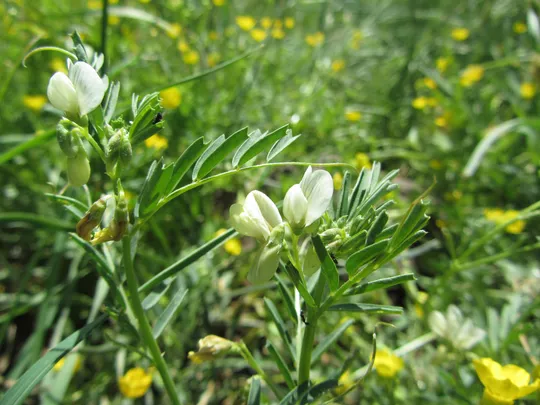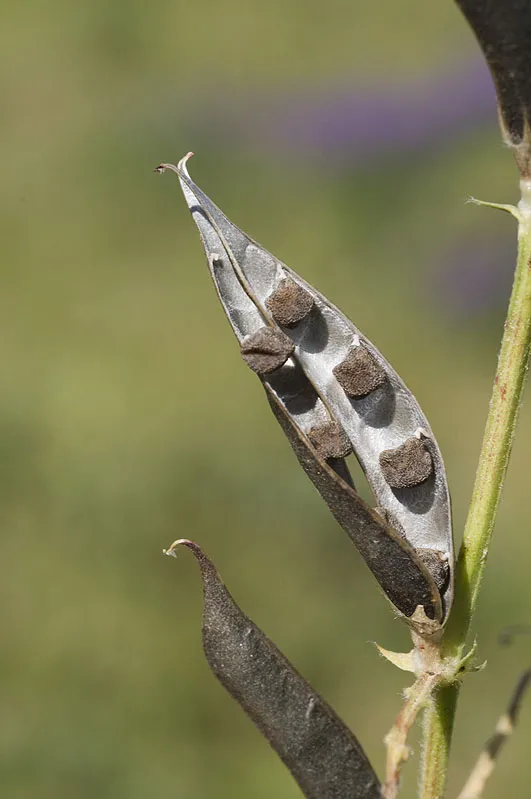Esdraelon Vetch
Vicia esdraelonensis
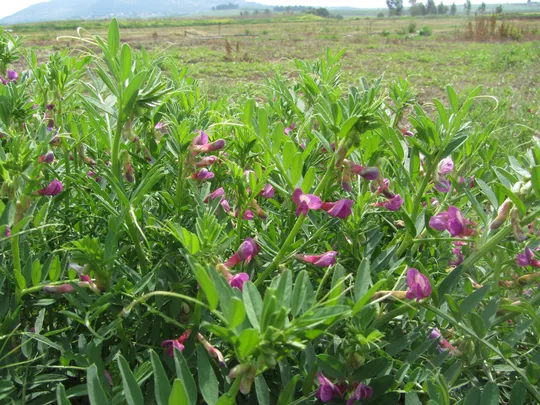
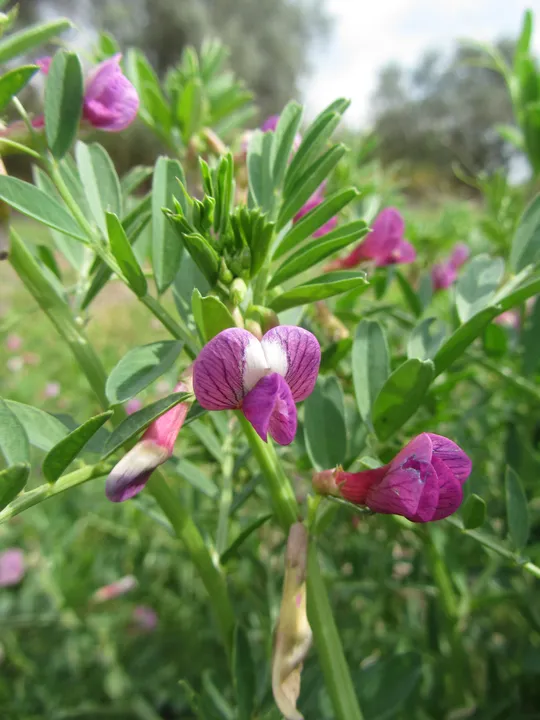
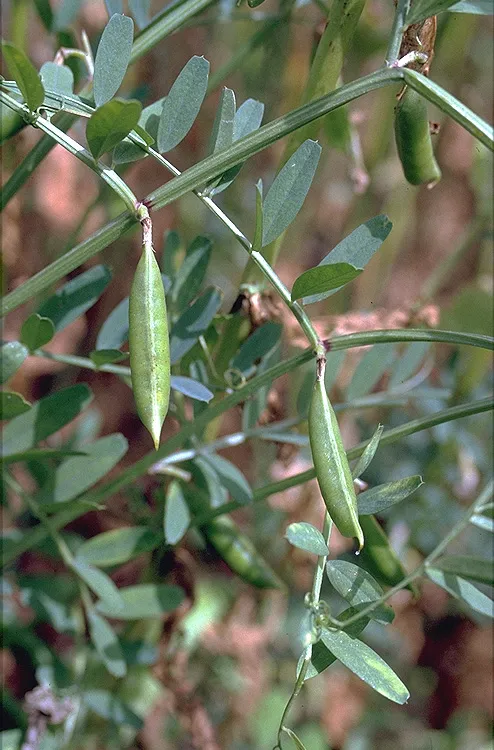
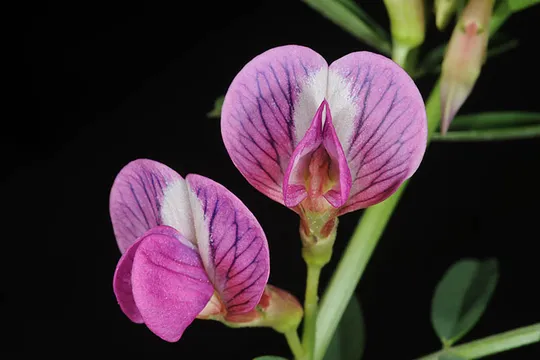
Vicia esdraelonensis is endemic to Israel and has been seen only a few times. It currently grows in a small number of sites in three regions: in the Jezreel Valley (En Adashim), Upper Galilee (Mitspe HaYamim (two plants were observed there in 1990 but have not been seen since), and the Hula Valley (Gonen, Kfar Szold). The species was discovered in 1924 in a marshy area near Balfuria (Balfouria Reserve?) in the Jezreel Valley, and was first described by Warburg and Eig. The species had previously been collected only a few times in the Hula Valley (Kfar Szold, 1950; Ahu Gonen, 1963), the eastern upper Galilee (Kfar Gil'adi, 1927; Mitspe HaYamim, 1990, two plants only) and in the Golan (Quneitra and Mazra’a, according to Mouterde). It is probably extinct from all these sites.
Moist depressions in heavy soil at the edge of small streams and springs; deep soils flooded in winter and carpets of annual plants at the edge of agricultural land on grumosol soil.
For the genus, see Vicia basaltica.
There are several species of Vicia that are very similar to Vicia esdraelonensis, and the features that distinguish between them are: V. galeata bears peduncles with three cream colored flowers; V. sativa has purple flowers, almost sessile, and no whitish patch on the standard; V. lutea has yellowish flowers, a smooth calyx hairless and hairy pods . No intermediate forms between the species were found.
• The global distribution of Vicia esdraelonensis is extremely limited. The species is found only in northern Israel, with minuscle populations in very few sites, on seasonally moist soil. This distribution pattern is typical of several species of Vicia and Lathyrus in our region (V. hulensis, V. basaltica, Lathyrus lentiformis, and L. setifolius). These species are particularly vulnerable due to their distribution model and habitat, which is disappearing under modern agriculture.
• In Israel, and probably in the world, only a single stable population remains, and at least another five sites no longer exist following development and construction. The existing site is located near a settlement, and it is highly probable that it will be negatively affected.
• The number of individuals worldwide is estimated at 100 to 1000. This is a miniscule number of items, which makes this a critically endangered species.
• Fruit and seed production were observed, which indicates the continued existence of the species every year.
• Most of the surviving populations are not included in nature reserves, except for the population at Mitspe HaYamim.
Two Vicia esdraelonensis populations should be restored and monitored: 1. En Tel Adashim (not marked on the map, located one kilometer south of Wadi Adashim). This is the only remaining site and it should be declared a limited nature reserve. The site should be fenced, overgrazing and the spread of shrubs and shade trees should be prevented, and the existing population should be monitored. 2. V. esdraelonensis should be reintroduced to the nearby Balfuria Reserve, from where the species was first described! Overgrazing should be prevented and the new population monitored. Only after studying these two sites should V. esdraelonensis be restored to a moist site farther away to protect it from geographical extinction due to excessive proximity.
Seeds were collected from the site and have been given to a number of botanical gardens. It is important to ensure they are sown in special plots, as agreed, and that new seeds are collected from them every year. At the same time, attempts should be made to find the species in the Kfar Szold location and to continue searching for it at other locations mainly in the Lower Galilee, in the Galilee panhandle and the Golan. The size of its seed bank should be checked.
Vicia esdraelonensis is endemic to northern Israel. In the flora of Syria and Lebanon (Mouterde 1966) there is data given from Quneitra. Consequently, the Flora Palaestina notes that the species is not endemic to Israel, but has an eastern Mediterranean distribution. However, the species identification from Quneitra is in doubt.
Vicia esdraelonensis is an annual legume endemic to Israel, which was identified and described from the Jezreel Valley and is in serious danger of global extinction. Only one stable population is known (En Tel Adashim), and there were two incidental observations at Mitspe HaYamim. Its habitat has been systematically destroyed for the last eighty years, and populations are extinct in all the sites, including the site from where it was first described.
Current Occupancy Map
| 1000 squre meter pixel | 5000 squre meter pixel | 10000 squre meter pixel | |
|---|---|---|---|
| number of observations | 0 | 0 | 0 |
| in total pixels | 0 | 0 | 0 |
| Family | Fabaceae |
| Classification | On the endangered species list |
| Ecosystem | Mediterranean humid |
| Chorotype | Eastern Mediterranean (Endemic) |
| Conservation Site | Wadi Adashim |
| Rarity |
1
3
6
|
|---|---|
| Vulnerability |
0
4
4
|
| Attractiveness |
0
0
4
|
| Endemism |
0
4
4
|
| Red number |
1
5.8
10
|
| Peripherality | 0 |
| IUCN category | DD EW EX LC CR EN VU NT |
| Threat Definition according to the red book | Critically endangered |
 Based on:
Based on:
